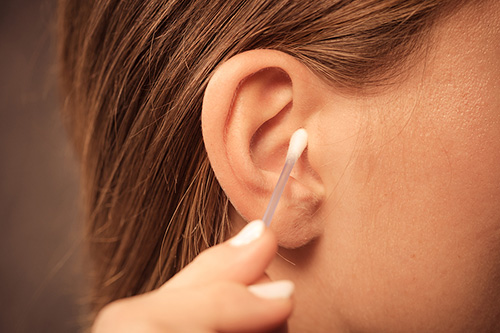_1.jpg?branch=web_prod)
How to clean your ears: wax, blockages and home remedies

How to clean your ears: wax, blockages and home remedies
10 minutes
Published 18 July 2019
22 January 2025
Ear wax is natural. But a build-up of wax in the ear canal can affect hearing and make life miserable.
Lots of us experience excessive ear wax at some point - a condition called cerumen impaction. Wax removal is a delicate process best handled by a hearing professional or doctor.
Excess earwax can be so uncomfortable that many people try home remedies like ear candling, ear swabs, or over-the-counter ear cleaners.
What are the symptoms of an ear blockage?
Symptoms of a blocked ear include:
- a feeling of fullness in the ear
- ear drainage
- partial hearing loss
- itching
- tinnitus (ringing in the ear)
Why do we have earwax?
Earwax — called cerumen — doesn’t get a lot of credit for its role in good health. It’s
completely natural for your body to produce this sticky, waxy substance as part of the ear’s self-cleaning mechanism.
Earwax traps tiny particles of dirt, dead skin cells and dust, filtering them out and away to protect the eardrum and the inner ear. The wax also lubricates the ear canal to prevent dryness or itching.
Do I have to see a doctor to have my ears cleaned?
If your ear canal is completely blocked, see your doctor or an Ear, Nose, and Throat (ENT) specialist for safe removal of the wax.
The ear is incredibly delicate, and excess wax can damage your eardrums. Even if there is no rupture, we recommend visiting your doctor or ENT specialist.
See a hearing professional or doctor if you:
- use hearing aids
- swim regularly
- have very narrow ear canals
- have excessive amount of earwax.
There are a lot of misconceptions about ear cleaning — not all methods are safe or reliable solutions for dealing with earwax.
How to do ear cleaning at home?
If your ear canal is completely blocked, see your doctor or an Ear, Nose, and Throat specialist (ENT) for safe removal of the wax.You may be able to treat a partial ear blockage at home.Don’t try this is if your eardrum is showing signs of perforation like ear pain, pus or blood-stained drainage. If these symptoms are present, then see your doctor.
- Run lukewarm (not hot) water or saline solution into your ear canal. You can use an ear irrigation kit or let a little warm water dribble into the ear canal in the shower. After a few minutes, the lukewarm water will soften the earwax, so that it can drain through the outer ear.
- Dab the ear opening and the liquid gently with a clean cloth.
- You can help coax old earwax out of the ear canal by chewing and moving your jaw. Once the earwax makes its way to the ear opening, it will dry up and can be wiped off the outside of the ear with a cloth or cotton ball.
Can earwax lead to hearing loss?
Yes. Ignoring the signs of a blockage and letting earwax build up in the ear canal can lead to long-term hearing loss.Is it safe to clean ears with Q-tips or cotton buds?
No. Many people use Q-tips or cotton buds for ear cleaning, but it simply isn’t safe to stick objects into your ear canal.
Be extra careful with ear swabs if you have:
- had ear surgery
- a ruptured eardrum
- ear pain or drainage.
Imagine a narrow pipe full of dirt. You want to remove the dirt with a long stick. But the stick you’re using is only a little narrower than the pipe, and much shorter.
In the same way, pushing a cotton swab onto your ear canal pushes the plug of wax further down. You may block the exit, and risk injuring the eardrum. When wax hardens right near the eardrum, it can lead to drastic hearing loss.
Is ear candling safe?
No. We don’t recommend this popular DIY method of ear cleaning - sometimes known as Hopi ear candling. There is a high risk of injury from hot wax leading to permanent damage to the ear canal.
How to clean your ears safely
- Ask your doctor or hearing professional to remove the wax
- Irrigate your ear canal with warm (not hot) water
- Gently clean the outer edges of your ear opening with a damp cloth
- Don’t insert any ear swabs into the ear canal
Are your ears clean, and yet they still seem to bother you?
Book an appointment to have your hearing tested at one of our clinics today.
Author
Connect Hearing
Sonova
.png?branch=web_prod)
_1.jpg?branch=web_prod)
_1.jpg?branch=web_prod)
.png?branch=web_prod)